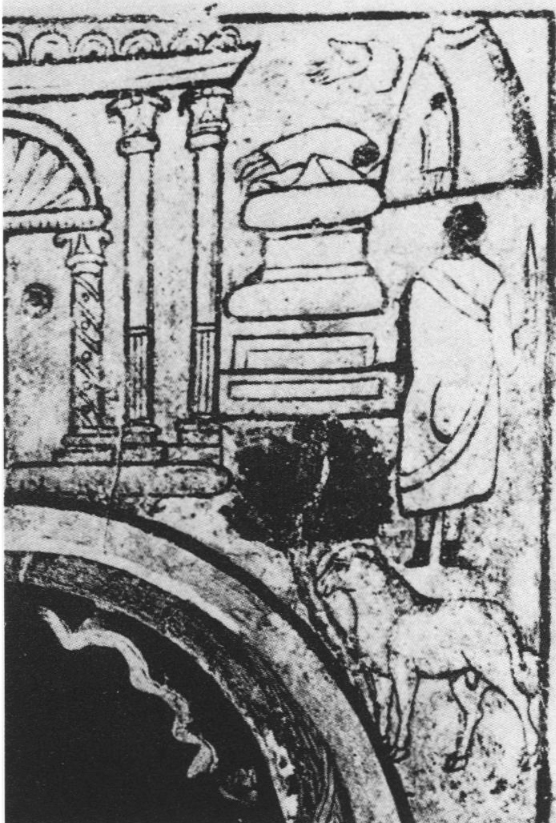
The Sacrifice of Isaac
3rd century
Wall painting
Dura-Europos, Syria
The image includes most of the details from Genesis 22:1-14, positioned to fit into the space available rather than to present a realistic "scene." Abraham stands with a sword in the center of the image, wearing a tunic with some sort of sash that suggests a priestly function. To his left Isaac is represented by a few lines at the top of the altar. In the foreground are a ram and what appears to be a tree. (In Genesis the ram is caught by its horns in a bush.)
The triangular shape in the top right is hard to interpret. It may represent the mountain where the sacrifice was to take place. In that case, the person standing at its base could represent one of the two servants who stayed below while Abraham and Isaac went up for the sacrifice, although in other images those two appear very rarely. Another possibility is that the figure is Isaac, either before ascending the mountain or after he is unbound.
In the narrative God tells Abraham at the last minute that he need not sacrifice his son after all. His pronouncement is pictured as a hand, which is also the practice in paleo-Christian images of this episode. In the Greek texts then used by Christians and probably by the Dura congregation, Abraham would have heard ἄγγελος Κυρίου, which can mean either "the Lord's angel" or "the Lord's message." Picturing a hand assumes that it is God, not an angel, who says, "thou…hast not spared thy only begotten son for my sake." Later images in the Christian West customarily give these words to an angel, reflecting Latin translations of ἄγγελος Κυρίου as angelus Domini, which unambiguously means "the angel of the Lord."1
Abraham has his back to the viewer. One explanation for this odd choice could be that he is listening to the message symbolized by the hand.
A Christian image in Rome from the same period makes that point by depicting Abraham in the "orant" pose that signifies prayer. But if this is the case one wonders why the person standing at the mountain also faces away from the viewer.
Read more about images of the sacrifice of Isaac.
1 Both the Vulgate translation from the Hebrew and the Vetus Latina from the Greek have angelus. For the Vetus Latina, see Fischer, 235. For the Vulgate, follow this link to the Bible Gateway site.